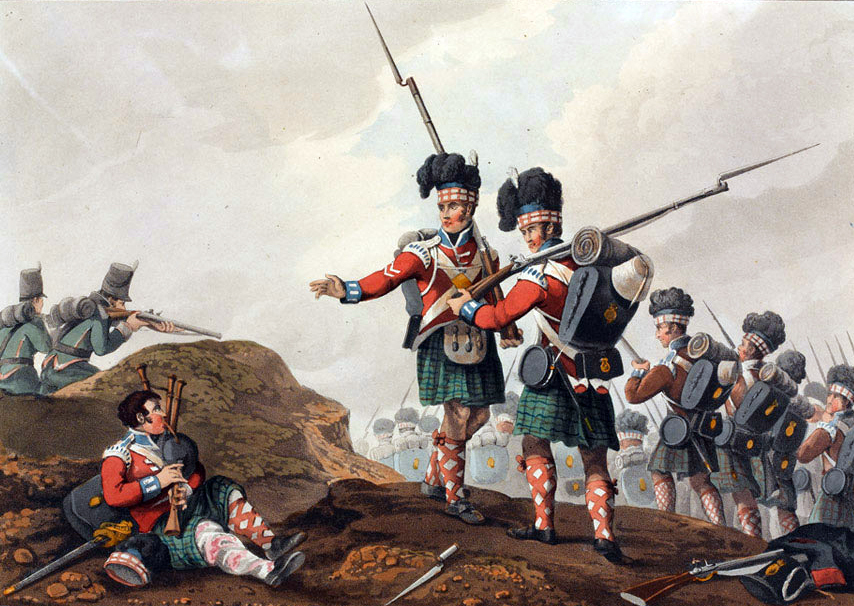
WE HERE AT MHN thought we’d call it quits for the week by way of this list of artifacts from some of history’s prodigious surrenders. Enjoy!

#22 The World Turned Upside Down
The curtain finally came down on Great Britain’s ill-fated war against the 13 colonies in September of 1781. That’s when a force of 9,000 redcoats, German troops and Tories under the command of Gen. Charles the Earl Cornwallis found themselves besieged for three weeks at Yorktown, Virginia by a force Continentals and French regulars. With 18,000 enemy troops closing in and escape via the sea all but impossible (thanks to a French naval blockade of Chesapeake Bay), Cornwallis had no choice but to surrender. He did so on Oct. 19. And although the 43-year-old English commander refused to present himself personally to George Washington to turn over his sword — he claimed to be not feeling well that day — Cornwallis’ signature does appear on the formal Articles of Capitulation. A copy of that agreement, penned by an adjutant of American general Henry Knox, is now the property of the Gilder Lehrman Institute of American History in New York. Under terms of the document, all Crown forces were to assemble outside of their fortifications at precisely 2 p.m. and lay down their arms before the French and American troops and then march off into captivity; the king’s officers were to be paroled. Cornwallis did seek amnesty for the Loyalists attached to his army; Washington refused the request. In a last act of defiance, the British army musicians played the song “The World Turn’d Upside Down” during the surrender ceremony.


#23 Lee Throws in the Towel… Literally
The last flag of Robert E. Lee’s once formidable Army of Northern Virginia wasn’t the iconic Rebel battle banner, nor was it the earlier Stars and Bars or even the Bonnie Blue Flag — It was an ordinary white towel! A Confederate aide named Capt. R. Sims waved the small linen dishrag as he passed through the Union lines on his way to Appomattox, Virginia on April 9, 1865. Lee had ordered the adjutant to present himself to the Yankees in order to seek terms from Ulysses S. Grant, commander of the Army of the Potomac. The young officer was intercepted by Northern pickets and escorted to Gen. George Custer who happened to be commanding a cavalry unit in the area. The future hero of the Indian Wars tore a segment of the towel away before passing along the message to his superiors. Later that day, Lee and Grant met in the parlour of a local home and brought the bloody four-year conflict to an end. Custer’s widow later donated the flag to the Smithsonian Institute. It’s now part of the museum’s extensive Civil War collection.

#24 Peace in our Time?
While not a surrender document, per se, the infamous Munich Agreement represented a complete capitulation to Adolf Hitler’s outrageous claim to a sizeable chunk of Czechoslovakian territory known as the Sudetenland. The accord was signed on Sept. 30, 1939 by British prime minister Neville Chamberlin, France’s Edouard Daladier, fascist Italy’s Benito Mussolini and the Fuehrer himself. After supposedly mollifying the land-hungry Nazi dictator, who was threatening war if his demands weren’t met, Chamberlin returned to Britain in triumph. He famously presented the signed document to a crowd of relieved Britons assembled at Heston Aerodrome west of London and declared that he had achieved “peace for our time” (although the phrase is often remembered as “peace in our time”). The page itself is now in the British National Archives. Incidentally, Czechoslovakia, a sovereign state since 1918, wasn’t even invited to the conference, despite the fact that its own future was being decided. Winston Churchill, then an MP and noted critic of appeasement, blasted the treaty. “We are in the presence of a disaster of the first magnitude,” he said in the House of Commons after the prime minister returned from Europe. “We have sustained a defeat without a war.” In the end, the dubious agreement wasn’t even worth the paper it was printed on. Within six months, Nazi Germany annexed the whole of Czechoslovakia and soon set its sights on neighbouring Poland. The rest is history.










